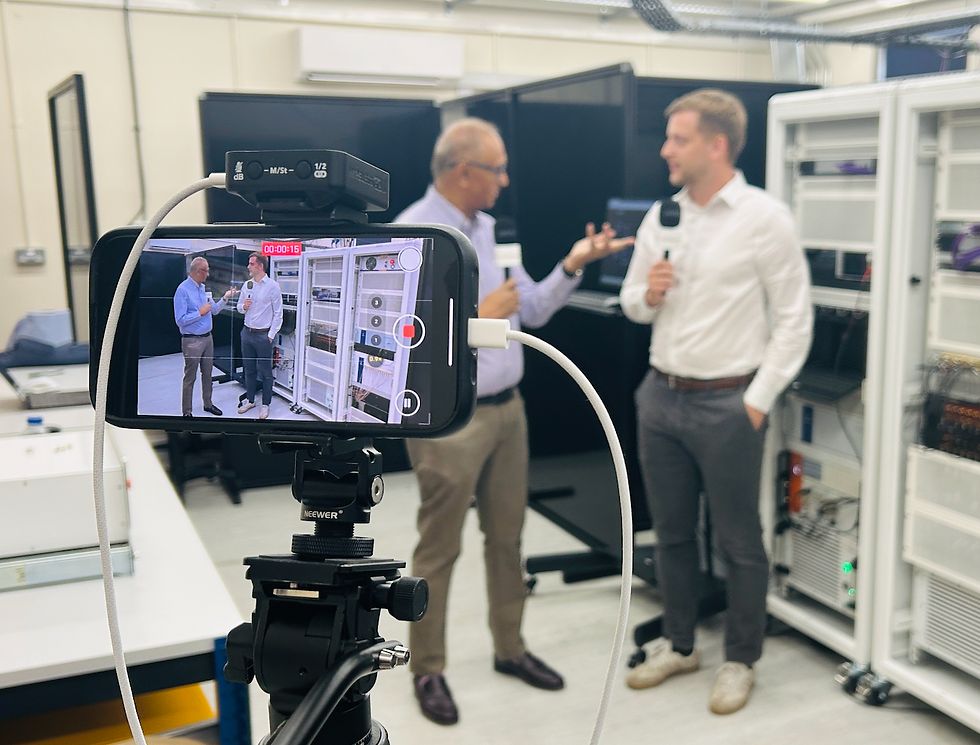Biochips, Neuromorphics, and the Future of the Human Mind
- dcharold
- Aug 27
- 3 min read

(Or, yet more musing on William Gibson)
In the Sprawl trilogy, William Gibson gives us the arc of a technology. In Neuromancer, the underworld tech fixer, the Finn, mentions biochips as the next step beyond silicon. They exist, but the silicon industry keeps them down. In Count Zero, the idea broadens. Biochips and biosofts start to appear in the world of research labs and corporate intrigue, tied to attempts to merge biology and computation. By Mona Lisa Overdrive, biosofts are more commonplace. People slot them into their neural jacks. They carry skills, memories, even personalities. A large one, the Aleph, might contain everything.
This is not just a faster computer. It is a technology more sympathetic to the human brain. In Mona Lisa Overdrive, Angie Mitchell has biosoft vévés (beacons for the spirits in voodoo, the spirits in this case being rogue AIs) written directly into her head. The medium of technology, of software specifically, has shifted: not binary code, but something closer to memory and experience. In Gibson’s imagined world, information doesn’t just pass through the mind, it becomes the mind.
The trajectory culminates in the Aleph. The Aleph is a theoretical device with enough memory to hold all of reality. It is the endpoint of the biochip vision: not just skills or personalities, but entire worlds.
Seen from today, this maps neatly onto the research frontier of neuromorphic hardware. Neuromorphic processors use non-volatile devices like memristors and ReRAM. They are stateful, analog-ish, and energy efficient. They don’t run instructions step by step. They store and recall patterns. They are built to learn. (I’ve added a comparison of biosoft and neuromorphics, created by AI, after this article).
The overlap is striking. Gibson’s biosofts turn cognition into modules you can insert or copy. Neuromorphic processors are an engineering approach to the same idea: building chips that behave less like machines and more like brains.
The implications are the same too. If you can encode skills, you can imagine encoding a whole self. Gibson’s characters meet constructs, ghosts of people whose minds were captured and run outside their bodies. They raise the question: if our minds can be mapped onto new hardware, would that still be us, or only a copy? In Neuromancer, an early digital ghost, Dixie Flatline, demands to be wiped as payment for a job so miserable is his digital afterlife. By Mona Lisa Overdrive, Bobby Newmark, Count Zero of the second book, is on a quest to escape his body into a purely cyberspatial existence.
If minds can run outside the body, they can also run outside the Earth. In Gibson’s world, human and AI together migrate into the cyberspace network and beyond: to the stars. The biochip is the first rung on that ladder.
So, biochips are more than a plot device. They are a framework for thinking about computing minds that are close to our minds. Today’s neuromorphic research is not yet Gibson’s biosofts. It is still experimental, still narrow. Companies are modelling fish, not humans. But it shares the same direction: away from binary code and toward cognition as hardware.
Gibson saw what that would mean. Once machines think like we do, the technical questions are supplanted by existential ones. What counts as identity? What counts as survival? And, if minds can run without bodies, where might we choose to go?
Everything below this line was created by AI.
Neuromorphic vs Gibson’s Biochips: Two views of 2025
Mona Lisa Overdrive is set approximately 15 years after Neuromancer and 8 years after Count Zero, placing the story in the late 2020s in a fictional, near-future world.
Where They Align
Computation model: Gibson’s biosofts encode memories and skills. Neuromorphic chips encode patterns of activity. Both move away from binary instruction toward cognition as hardware.
Substrate: Biosofts are grown or organic. Neuromorphics are still silicon but use memristors that behave more like synapses than switches.
Usage: In Gibson, a new skill is as simple as inserting a biosoft. In today’s research, neuromorphic hardware learns by exposure, adapting its weights directly in hardware. Both embody learning without abstraction.
Suppression and inertia: Biochips in Neuromancer are held down by vested interests. Neuromorphic processors today face a different form of resistance: an industry still invested in von Neumann machines.
Where They Diverge
Scope: Neuromorphic chips today run narrow AI tasks — vision, speech, control. Gibson’s biosofts carry whole personalities.
Cultural frame: For Gibson, the point is not performance per watt but ownership of the mind itself. Biosofts are black-market goods, knowledge and identity sold as cartridges. In our world, neuromorphics are sold as low-power AI accelerators. There is a vast performance gap between the two.
Endgame: Research today is cautious. Gibson’s arc ends with the Aleph, a machine that can hold a model of reality itself.


